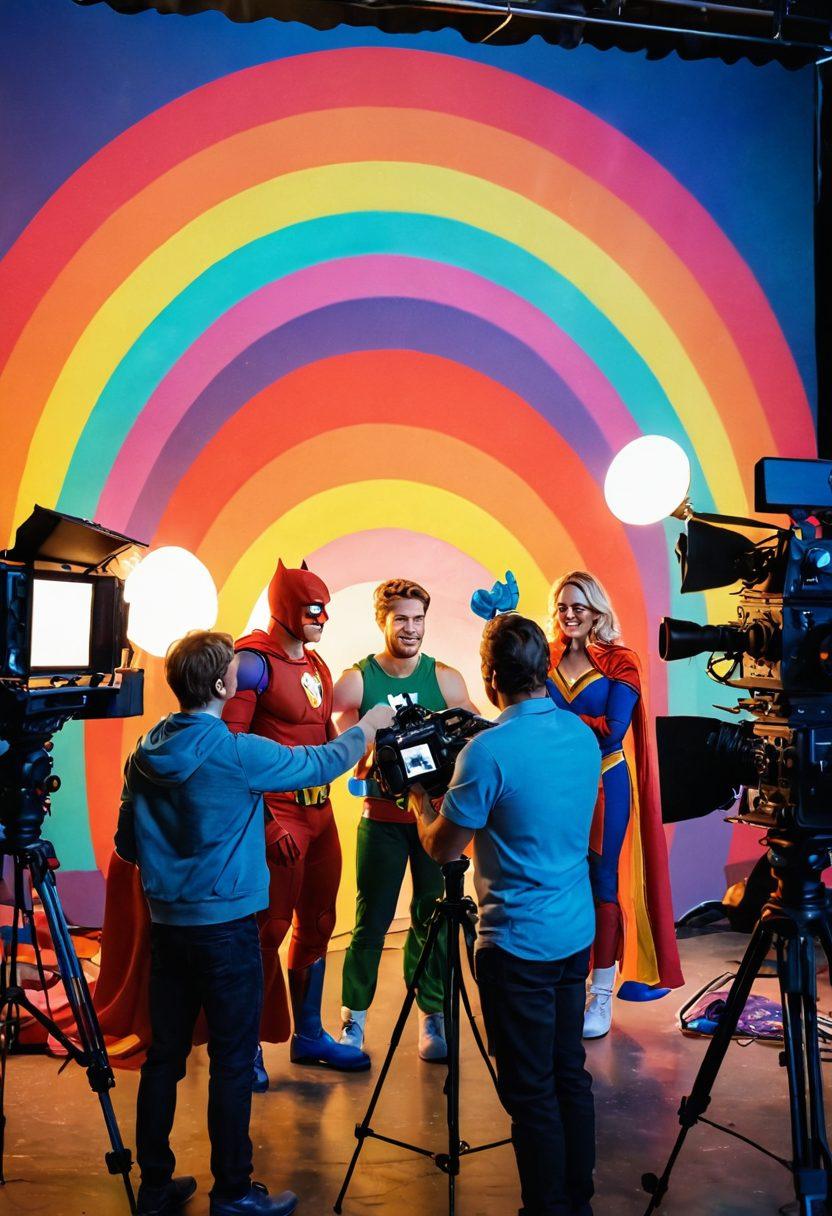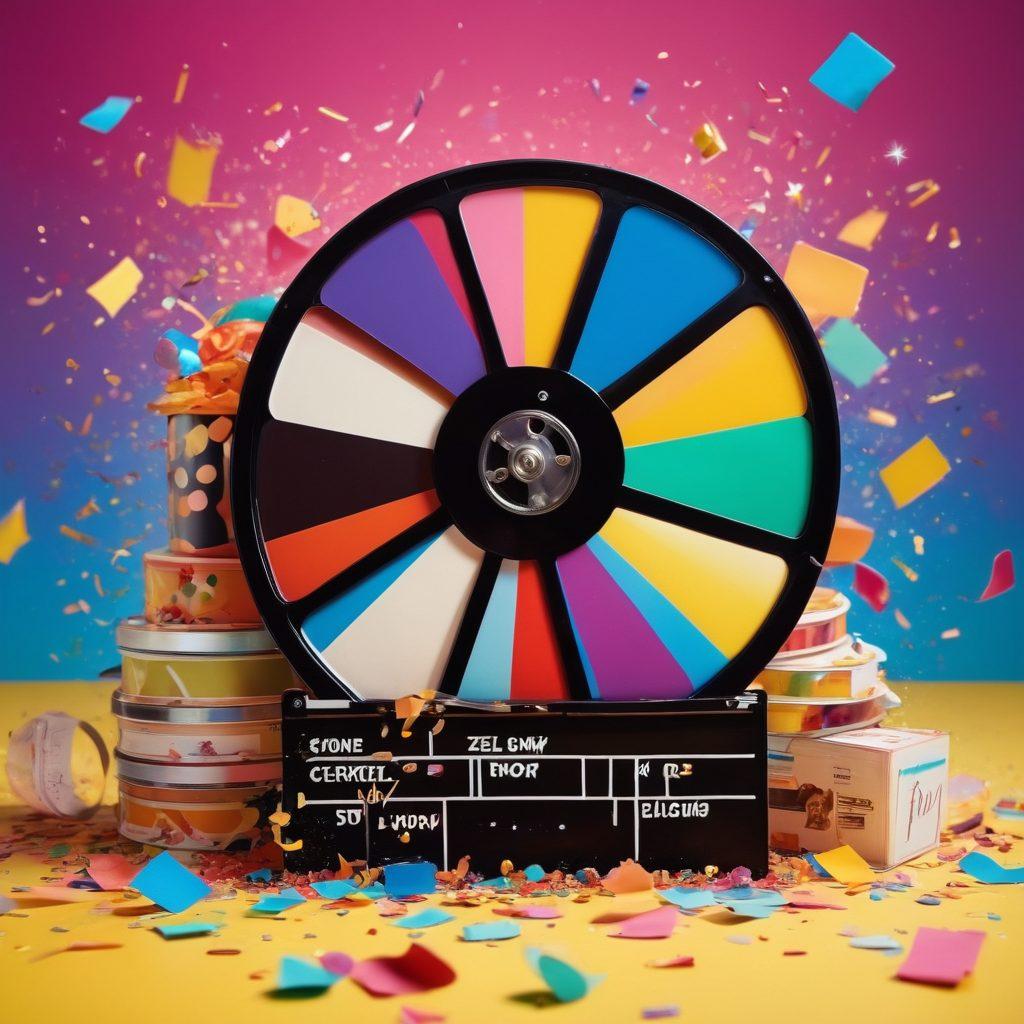Creating Joyful Cinematic Masterpieces: The Art of Filmmaking Superheroes and Happy Endings
Have you ever sat in a dark cinema, popcorn in hand, and felt the thrill of the opening scene of an action film? Or perhaps you've chuckled at the wit in a comedy movie? This is the magic of filmmaking—a world where ordinary stories transform our beloved superheroes into joyful icons that resonate with audiences everywhere. As we dive into the art of filmmaking and explore how these characters leap off the page and onto the silver screen, we can't help but consider: how does storytelling elevate the experience of superheroes from simple comic book figures to symbols of inspiration and joy?
At the heart of every blockbuster, whether it's a family film set on an enchanting adventure or a romantic film that tugs at our heartstrings, is the powerful medium of cinematography. Filmmakers wield their cameras like wands, capturing moments that set our souls ablaze. As the great filmmaker Martin Scorsese said, 'Cinema is a matter of what's in the frame and what's out.' With each frame, we witness visual storytelling that enhances the emotional journey of our favorite superheroes, allowing audiences to feel their triumphs and tribulations.
Think about the recent wave of superhero films that dominated film festivals and streaming services alike. Each release seems to come with a promise of joy—an assurance that even in the face of adversity, the heroes will find their way to a happy ending. But this isn't just about entertainment news or box office numbers; it's about the heart of the stories told. Every successful filmmaker knows that the magic lies in how relatable these characters are. Parents can connect with their children through family films that highlight core values, while friends gather to laugh at comical mishaps during a thrilling adventure.
Moreover, as we dissect movie reviews, it becomes clear how independent films have carved their niche in the landscape of pop culture, introducing fresh narratives around superheroes that celebrate diversity and authenticity. The unique perspectives these filmmakers present remind us that there’s a happiness inherent in stepping out of the mainstream, leading to a more inclusive cinematic experience. So, ask yourself: how often do you seek out these hidden gems that challenge the traditional superhero mold and bring a smile to your face?
In conclusion, embracing the techniques of visual storytelling within filmmaking grants us access to joyous interpretations of our superhero icons. So, the next time you sit down to enjoy action films or romantic films featuring larger-than-life characters, remember that the joy you experience is a product of creativity, craft, and the universal truths that resonate within us. Happy watching, and may your future movie previews be filled with the same sense of joy that these magnificent heroes bring to our lives!
Behind the Lens: The Cinematic Techniques for Crafting Happy Endings
Behind every captivating film, there lies a symphony of cinematic techniques that masterfully craft happy endings. As we dive deep into the world of filmmaking, one cannot help but wonder: what is it about these joyous conclusions that resonate so strongly with audiences? From heartwarming family films to edge-of-your-seat thrillers, the art of creating a satisfying resolution transcends genres, engaging viewers and leaving them with smiles on their faces. In this post, we’ll explore the myriad techniques filmmakers employ behind the lens to ensure their stories end on a high note, whether they involve superheroes saving the day or romantic leads finding their true love.
Visual storytelling is the heartbeat of any blockbuster or independent film. The beauty of cinematography lies not just in how characters are framed, but in how emotions are conveyed through images. When creating a joyful cinematic experience, filmmakers often lean on vivid colors and dynamic camera movements to illustrate triumph and happiness. Think of the vibrant hues in a comedy movie that exaggerate silly situations or the sweeping shots that capture the essence of love during a romantic film. It’s fascinating to see how lighting, perspective, and composition work in tandem. Have you ever watched a scene and felt your heart race, only to be filled with warmth when everything falls perfectly into place? That's the magic of visual storytelling!
A key element to achieving these happy endings is the pacing of a film. Timing can make or break any narrative, thus determining whether the conclusion feels rushed or perfectly orchestrated. This is where story arcs come into play; recognize how every thrilling moment gradually leads to a climax before rewarding viewers with that sought-after conclusion. Movie previews often tease us with just enough tension to keep us invested, only to deliver a satisfying resolution that feels earned. It’s that blend of tension, timing, and emotional depth that keeps us coming back for more, igniting discussions in entertainment news and sparking debates in movie reviews.
Moreover, the inclusion of relatable characters is paramount. Audiences embrace their heroes—be they traditional superheroes or everyday individuals—along their journey towards happiness. When developing a filmography that emphasizes joyful outcomes, filmmakers tap into the universal emotions of hope, love, and perseverance. Even in the realm of thrillers, where tension typically reigns, a glimmer of happiness at the end can create a memorable experience. It’s as if every film holds a mirror to our lives, reminding us that despite the shadows, the sun shines a little brighter once the credits roll. Have you ever left a theater feeling lighter, as if the weight of the world had just been lifted?
Finally, let’s not forget the impact of music and sound design, which elevates the cinematic experience to unprecedented levels. The triumphant score that swells as our heroes achieve their goals adds layers of joy, enhancing every cheer, laugh, and tear. Whether it's bombastic orchestras in action films or soft piano melodies in romantic films, music intertwines with visual storytelling, wrapping up the narrative in a delightful package. So, the next time you sit down to enjoy your favorite streaming movies or eagerly await the next film festival screening, ask yourself: How do you define the happy ending? Is it laughter, tears of joy, or perhaps a moment of reflection? In the realm of filmmaking, every answer is valid, woven beautifully through the art of storytelling, and rendered immortal behind the lens.
From Script to Screen: Celebrating the Art and Impact of Joyful Filmography
In a world that often feels heavy with uncertainty, the art of filmmaking allows us to escape into worlds filled with joy, adventure, and unforgettable moments. From the script's initial spark to the final cut seen on the big screen, every aspect of this thrilling journey contributes to creating those cinematic masterpieces that warm our hearts and ignite our imaginations. Joyful filmography is not just about creating a movie; it’s about bringing forth a powerful emotional experience that audiences carry with them long after the credits roll. So, how do filmmakers achieve this magical transformation from script to screen?
At the core of joyful filmmaking lies the storytelling process, a blend of creativity, passion, and vision. Whether it’s an action film that gets your adrenaline pumping, a comedy movie that brings laughter into your room, or a family film that gathers everyone around the screen, every great film starts with a compelling script. The best writers infuse their tales with relatable characters, often superheroes who triumph against all odds, reminding us of our own potential. As the renowned filmmaker Alfred Hitchcock said, "There is no terror in the bang, only in the anticipation of it." This quote highlights the importance of building suspense and joy through well-crafted narratives, leading to memorable happy endings that resonate deeply with viewers.
Cinematography plays a pivotal role in enhancing the cinematic experience, as visual storytelling captures our hearts and minds. Imagine watching a romantic film where sunsets look ethereal, or a thriller that uses shadows to heighten suspense. Each frame is a work of art that conveys emotions without uttering a single word. In the vibrant landscape of entertainment news, we often find discussions on up-and-coming filmmakers who dare to push boundaries through independent films. These films contribute to a rich tapestry of pop culture, challenging mainstream narratives and giving voices to underrepresented stories. Movie festivals become the breeding grounds for these creative gems, allowing us to peek into diverse perspectives that spark conversation and joy.
As the box office continually evolves, the emergence of streaming movies has reshaped the way we consume and appreciate joyful filmography. With a simple click, we can access an array of genres, from family-friendly film extravaganzas to gripping thrillers. This shift ensures that joyful films reach wider audiences, allowing for impactful experiences that can unite us across continents. It's fascinating to see how movie previews create buzz and anticipation around upcoming blockbusters, allowing fans to dream and engage with cinema even before the release day. The excitement builds as trailers tease us with snippets of heroes overcoming challenges, delivering inspiring messages that linger long after watching.
Ultimately, the impact of joyful filmmaking stretches far beyond entertainment. It connects us, inspires us, and encourages us to embrace happiness in our lives. The power of film comes from its ability to transport us to different worlds, where we can laugh, cry, and cheer for our favorite superheroes. In this ever-evolving landscape of cinematic storytelling, let us celebrate those joyful film experiences—whether it be through heartfelt independent films or dazzling blockbusters that dominate movie reviews. So the next time you watch a movie, ask yourself: What joy do I take away from this cinematic journey? And remember, in filmmaking as in life, it’s the happy endings that remind us to keep dreaming.


